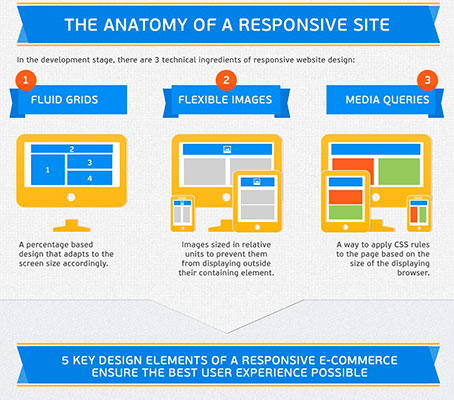Essential Aspects Of Website Design: Guidelines For Creating A User-Centric Site
Essential Aspects Of Website Design: Guidelines For Creating A User-Centric Site
Blog Article
Web Content Written By-Le Secher
When it pertains to internet site layout, guaranteeing user-friendliness is vital. From responsive style to streamlined navigation, every aspect plays an essential role in creating a website that satisfies your audience's needs. Yet what regarding the finer information that can make or break an individual's searching experience? Stay tuned as linked web page reveal some often-overlooked pointers that can boost your internet site's functionality to the following level, making it absolutely stand out in the digital landscape.
Importance of Responsive Design
Receptive design is an essential element of modern web site growth. Guaranteeing your web site is responsive means that it can adjust to various display sizes and tools, supplying a smooth experience for customers.
With the enhancing use mobile phones and tablets to access the web, having a receptive design is vital for getting to a larger audience. It aids in improving customer experience by making your internet site very easy to browse and read on any type of tool.
In addition, responsive style can positively influence your internet search engine rankings, as online search engine like Google prioritize mobile-friendly sites. By having a responsive style, you're also future-proofing your web site, as new devices with varying display sizes continue to emerge.
Simplify Navigating Structure
To enhance individual experience and help with simple access to information on your web site, simplifying the navigation structure is critical. When developing your site, concentrate on developing a clear and instinctive navigation menu that assists visitors discover what they're searching for rapidly.
Restriction the variety of menu products to the essentials, organizing relevant pages with each other to prevent overwhelming users. Use descriptive labels that clearly suggest the material of each page, making it much easier for users to understand where each web link will take them.
Think about implementing dropdown menus for subcategories to stop cluttering the main navigation bar. Furthermore, consist of a search bar plainly on the web page for individuals that favor searching for specific details.
seo website content in your navigating style to make sure very easy access on all devices.
Optimize Page Lots Speed
Improving web page load rate is critical for keeping site visitors on your site. Slow-loading web pages irritate customers and can bring about high bounce rates. To maximize web page tons speed, begin by maximizing photos. Press photos without jeopardizing quality to lower their data sizes.
Additionally, make it possible for browser caching to store regularly accessed sources locally, speeding up load times for returning site visitors. Minify CSS, JavaScript, and HTML documents by removing unneeded personalities, comments, and format, improving load rate.
Think about using a material distribution network (CDN) to distribute your site's content throughout several servers worldwide, lowering latency for users accessing your site from various areas. Lastly, limit the use of third-party scripts and plugins, as they can considerably affect load times.
Conclusion
In conclusion, by incorporating receptive style, simplifying navigating, and optimizing page load rate, you can produce an easy to use site that appeals to a bigger audience and improves customer experience. These essential elements ensure that visitors can quickly gain access to and navigate your site throughout various tools, causing boosted interaction and fulfillment. By concentrating on these crucial aspects, you can build a successful site that maintains users coming back for more.
